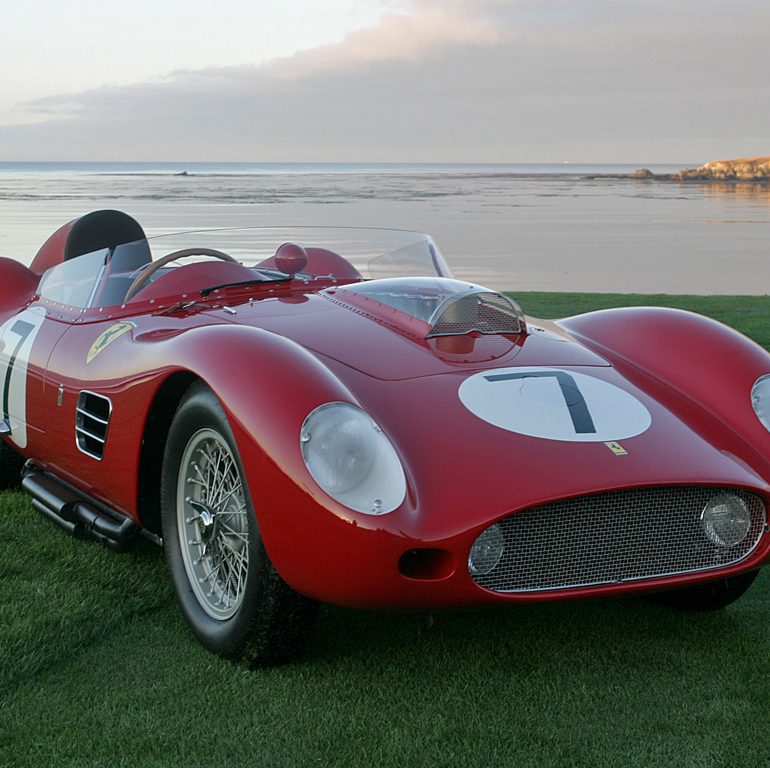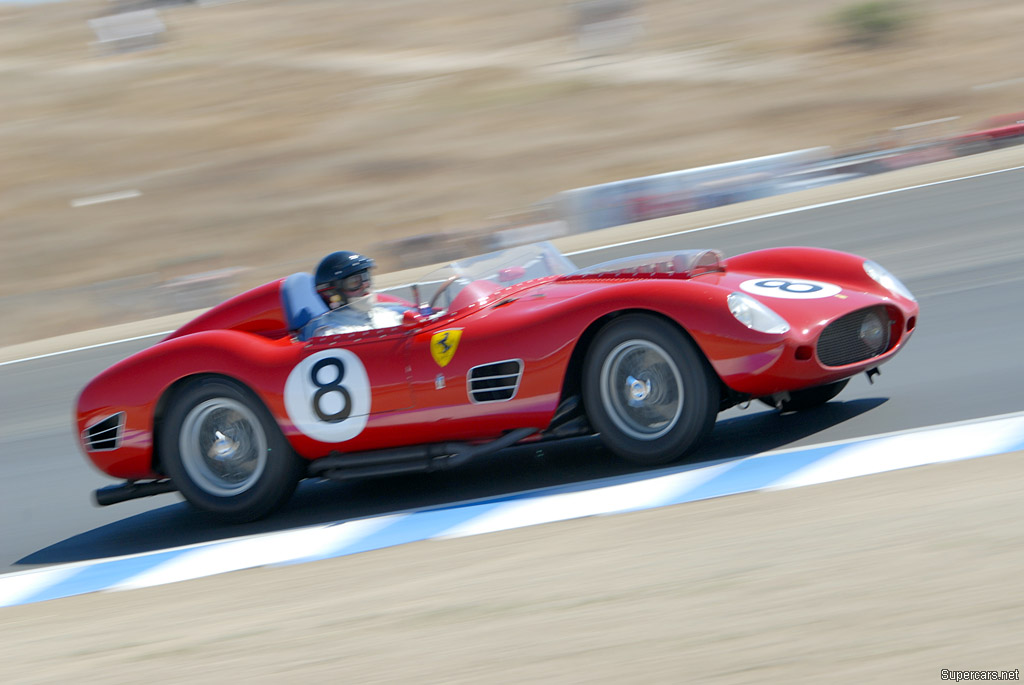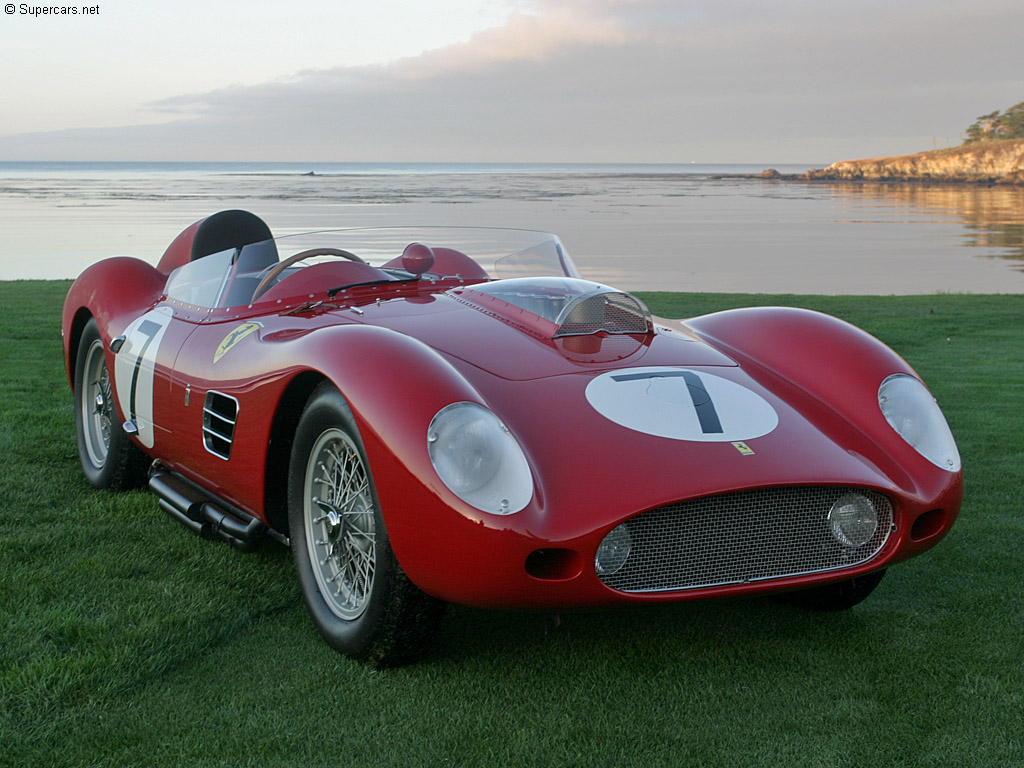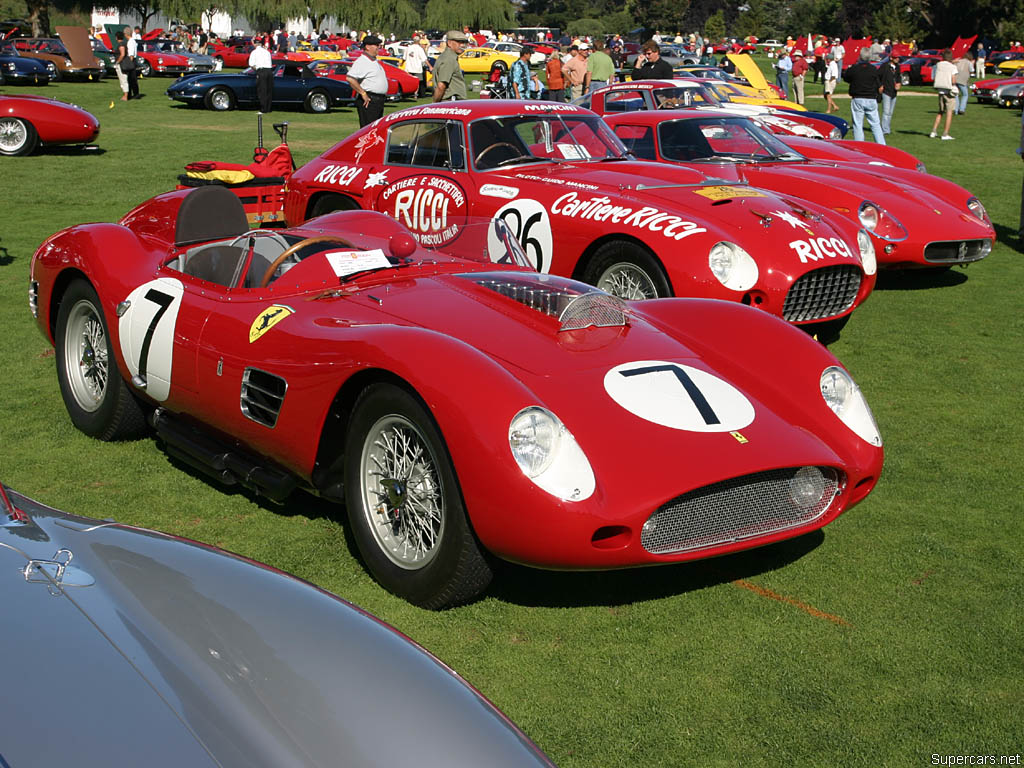1959 Ferrari 250 TR59
After winning the 1958 World Sports Car Championship, Ferrari had to update the Testa Rossa to maintain their prominent position. Throughout 1958, pontoon bodied 250 Testa Rossas were delivered and raced by customers. These supported four specially developed team cars, known as the TR58, that were largely responsible for the Championship-winning points.
Before the start of the 1959 season, Ferrari sold off the TR58s and chief designer Carlo Chiti prepared an even more radical car for the year ahead – the TR59. Complicated craftsmanship and expensive materials meant these cars were no longer viable as customer cars and were instead produced in limited numbers for factory use only.
Five newly engineered TR59s appeared over season with striking Pininfarnia-designed bodies that were executed by ex-Maserati craftsman Medardo Fantuzzi. The result was a lower and smaller Testa Rossa that incorporated many new elements, including front brake ducts and a clear plastic intake duct over the carburetors.
This body was supported by a new tubular frame chassis which mounted its engine offset the centerline. This made more room for the driver who could then sit much lower in the cockpit and balanced the drivelines weight.
A major transition was the switch from aging drum brakes to Dunlop discs which were first pioneered by Jaguar five years earlier in the Jaguar C-Type. After Peter Collin’s fitted a set to his 250 GT and Mike Hawthorn successfully raced with them at the Italian Grand Prix, they were added to the TR59 along with Dunlop R5 tires.
The engine retained the same overall architecture as before, but new coil springs replaced the hairpin type and offered a redline of 8800 rpm. With new camshaft timing, power was up to 306 bhp @ 7400 rpm. This was fed to the rear wheels through a Colotti-designed 5-Speed gearbox for the TR59, and, as a bonus, it was cast in magnesium.
All together, the new body, magnesium transmission and multiple other lightweight castings in the engine helped the TR59 lose over 100 lbs compared to the 1958 cars. Being lower, lighter and having more power, the 1959 season looked promising, but difficult times were ahead.
On the Track
While Ferrari won the opening Sebring Round with a one-two finish, the following Targa Florio, Nurburgring and Le Mans were failures and mostly retirements. Despite the poor results, privately entered Testa Rossas garnered much needed points for the championship. By the last round at Goodwood, Porsche, Aston Marin and Ferrari were contesting to take the Championship honors.
Since all the Le Mans TR59s had main bearing problems due to over-revving, a dry sump lubrication system was installed mid-season. The suspension was also adjusted, but neither the dry-sump nor suspension helped Ferrari at Goodwood. They would only take third place leaving Aston Martin with the championship. The defeat by Aston Martin left only a three point spread between to the top manufacturers.
Later that year, one of the TR59s was sold to John Von Neumann. He entered the car the Riverside GP in California among other interesting SCCA racecars. The Ferrari proved its worth, and when driven by Phil Hill, practically lapped the competition. This victory contrasted the results of the older customer cars that seldom took overall victories against the V8 powered Listers and Scarabs.
1959 was a very close season and one of the few, during the era, that Ferrari lost. Ferrari knew that they needed a more reliable car if they were to compete in 1960. Again, they reworked the Testa Rossa into the TR59/60 for the season ahead.
Photos & Image Gallery
See full 1959 Ferrari 250 TR59 Gallery here
Specs & Performance
| type | Racing Car |
| engine | Alunimum, 60 Degree, Tipo 128LM V12 |
| position | Front Longitudinal |
| aspiration | Natural |
| valvetrain | Chain Driven SOHC, 2 Valves per Cyl |
| fuel feed | 6 Twin-Throat 38 DCN Weber Carburettors |
| displacement | 2953 cc / 180.2 in³ |
| bore | 73 mm / 2.87 in |
| stroke | 58.8 mm / 2.31 in |
| compression | 9.8:1 |
| power | 223.7 kw / 306 bhp @ 7400 rpm |
| specific output | 103.62 bhp per litre |
| bhp/weight | 412.4 bhp per tonne |
| torque | 380.98 nm / 281 ft lbs @ 5500 rpm |
| redline | 8800 |
| body / frame | Aluminum over Tipo 526D Steel Tube Frame |
| driven wheels | RWD w/Limited-Slip Differential |
| front tires | 5.5×16 Dunlop |
| rear tires | 6.5×16 Dunlop |
| front brakes | Dunlop Discs |
| rear brakes | Dunlop Discs |
| front wheels | F 40.6 x 14.0 cm / 16 x 5.5 in |
| rear wheels | R 40.6 x 15.2 cm / 16 x 6 in |
| steering | ZF Steering Box |
| f suspension | Unequal A-Arms w/Coil Springs over Shock Absorbers, Anti-Roll Bar |
| r suspension | De Dion Type w/Coil Springs over Shock Absorbers, Anti-Roll Bar |
| curb weight | 742 kg / 1635 lbs |
| wheelbase | 2350 mm / 92.5 in |
| front track | 1308 mm / 51.5 in |
| rear track | 1300 mm / 51.2 in |
| length | 3959 mm / 155.9 in |
| width | 1523 mm / 60.0 in |
| height | 964 mm / 38.0 in |
| transmission | 5-Speed Manual |
Sources & Further Reading
Finn, Joel E. Testa Rossa V12, Newport Press: 1979.
Mallepelle, Paolo. ‘The Ferrari Sports Racer.’ Cavallino 42, Dec 1987.
Mangiamele, Guy. ‘250 Testa Rossa’. Cavallino 67, Feb 1992.
Finn, Joel E. Cavalleria 8: Ferrari 250 TR59/60, Cavalleria S.p.A.: 1995.
Pomeroy, Larence. ‘Succeeding a Champion.’ Motor, Apr 1958.
Prunet, Antione. Ferrari Sports Racing and Prototype Competition Cars, Haynes: 1983.







